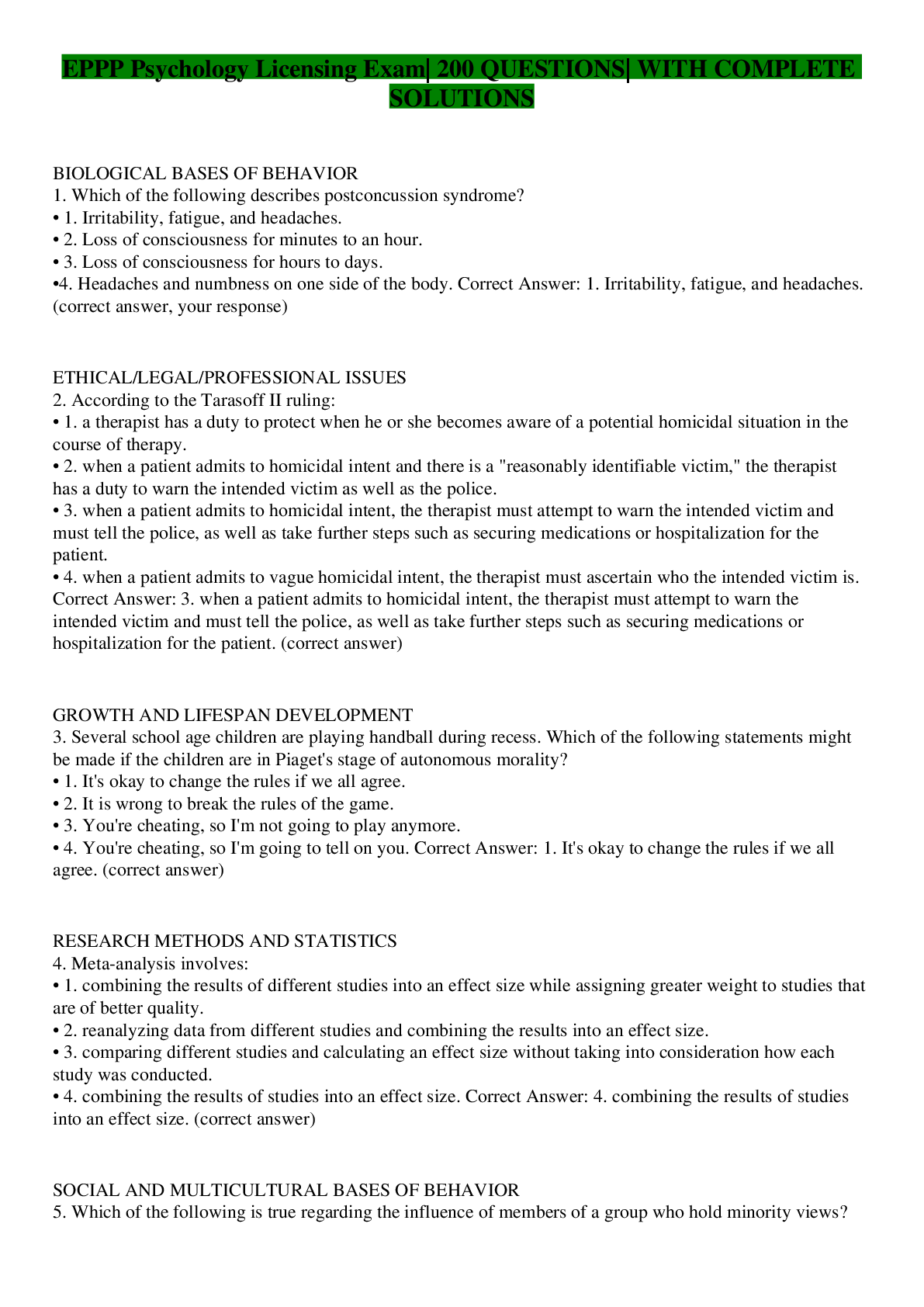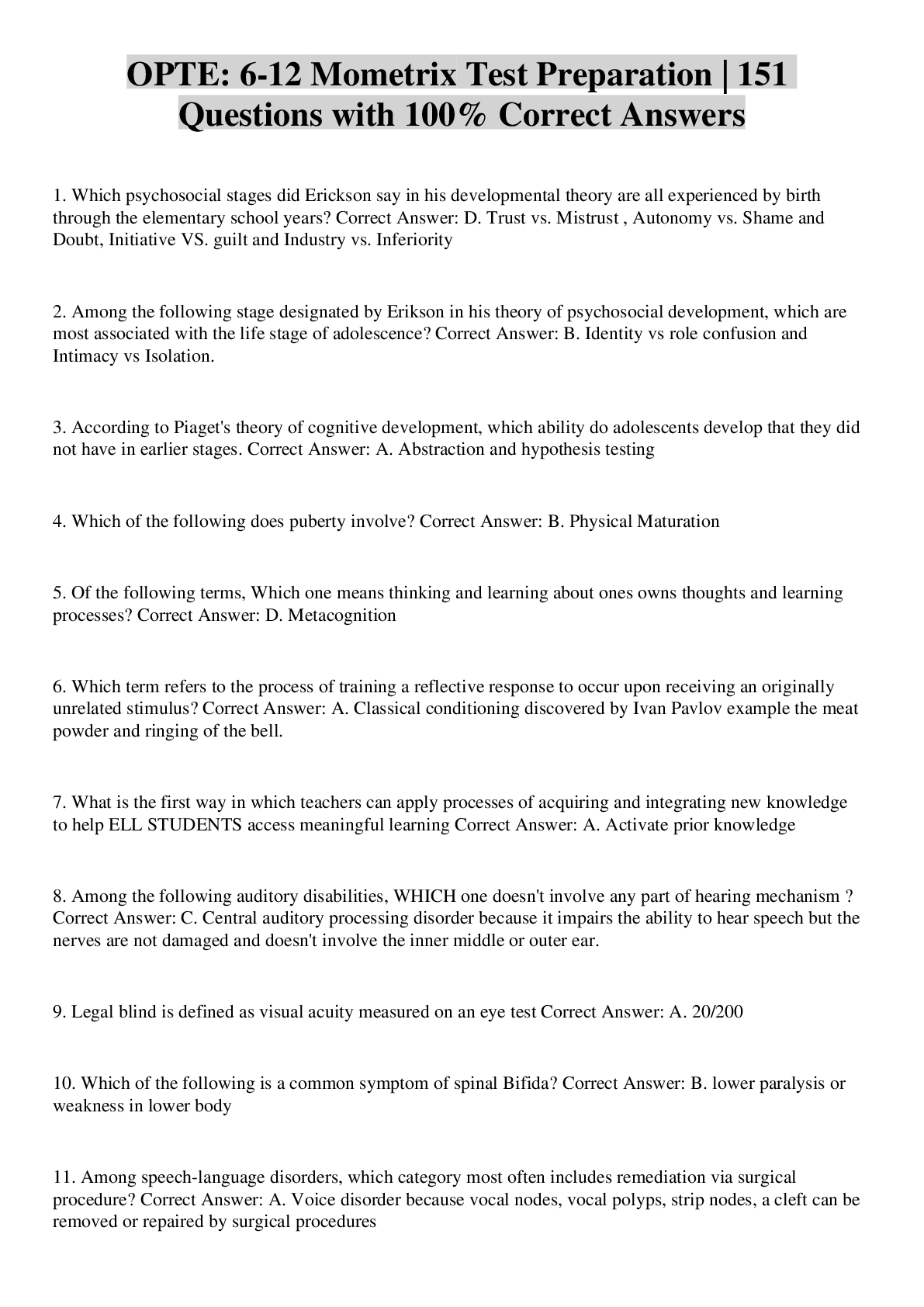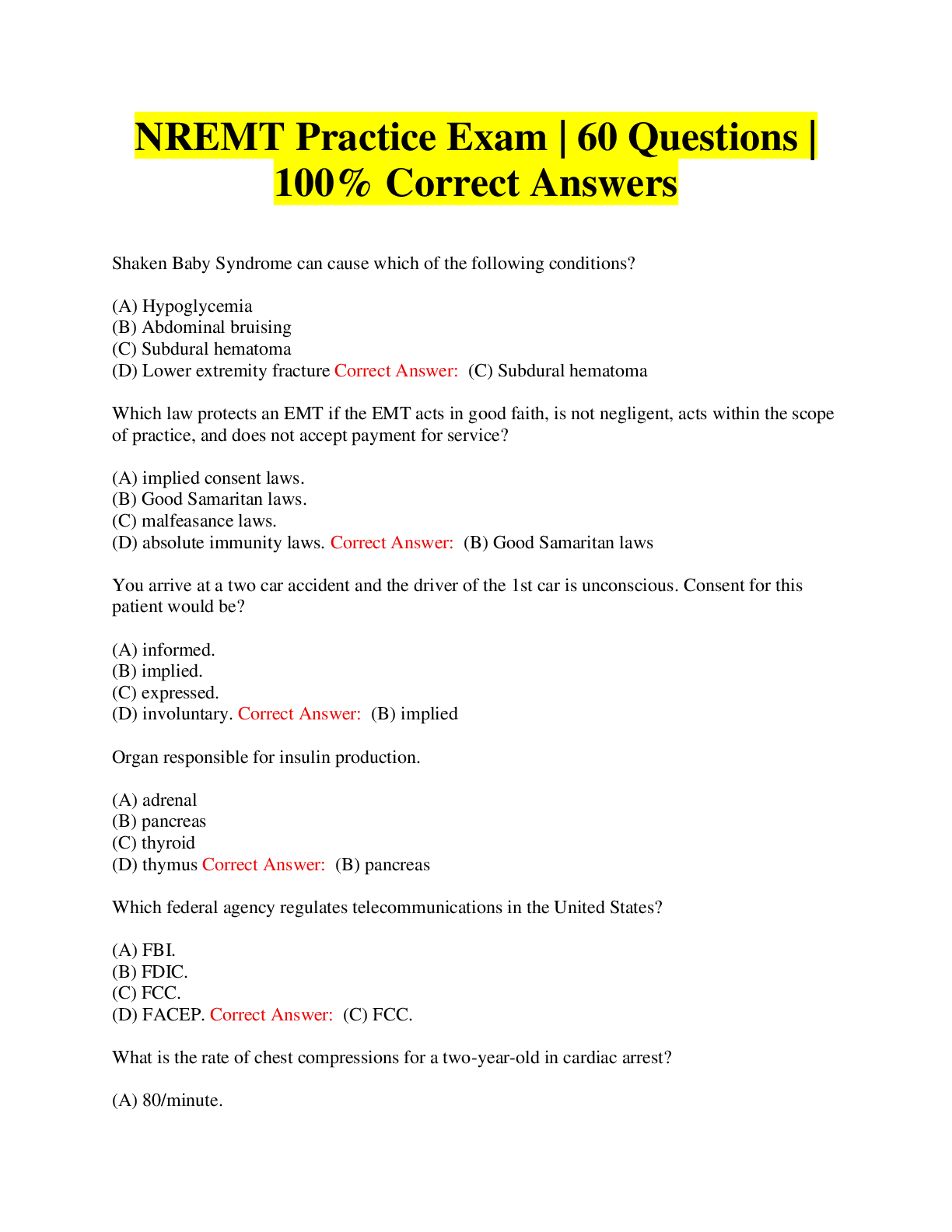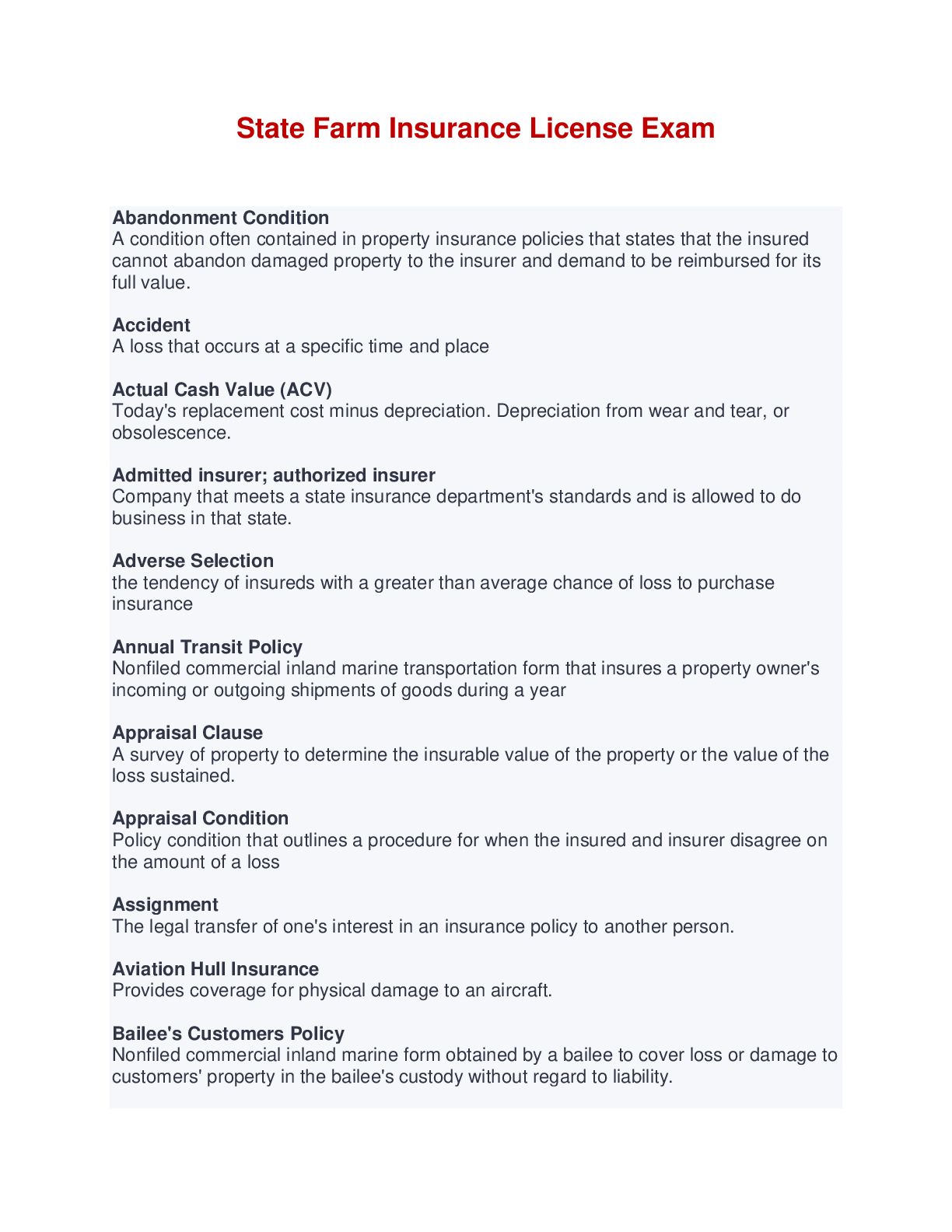Health Care > EXAM > EPPP Psychology Licensing Exam| 200 QUESTIONS| WITH COMPLETE SOLUTIONS (All)
EPPP Psychology Licensing Exam| 200 QUESTIONS| WITH COMPLETE SOLUTIONS
Document Content and Description Below
BIOLOGICAL BASES OF BEHAVIOR 1. Which of the following describes postconcussion syndrome? • 1. Irritability, fatigue, and headaches. • 2. Loss of consciousness for minutes to an hour. • 3. ... Loss of consciousness for hours to days. •4. Headaches and numbness on one side of the body. Correct Answer: 1. Irritability, fatigue, and headaches. (correct answer, your response) ETHICAL/LEGAL/PROFESSIONAL ISSUES 2. According to the Tarasoff II ruling: • 1. a therapist has a duty to protect when he or she becomes aware of a potential homicidal situation in the course of therapy. • 2. when a patient admits to homicidal intent and there is a "reasonably identifiable victim," the therapist has a duty to warn the intended victim as well as the police. • 3. when a patient admits to homicidal intent, the therapist must attempt to warn the intended victim and must tell the police, as well as take further steps such as securing medications or hospitalization for the patient. • 4. when a patient admits to vague homicidal intent, the therapist must ascertain who the intended victim is. Correct Answer: 3. when a patient admits to homicidal intent, the therapist must attempt to warn the intended victim and must tell the police, as well as take further steps such as securing medications or hospitalization for the patient. (correct answer) GROWTH AND LIFESPAN DEVELOPMENT 3. Several school age children are playing handball during recess. Which of the following statements might be made if the children are in Piaget's stage of autonomous morality? • 1. It's okay to change the rules if we all agree. • 2. It is wrong to break the rules of the game. • 3. You're cheating, so I'm not going to play anymore. • 4. You're cheating, so I'm going to tell on you. Correct Answer: 1. It's okay to change the rules if we all agree. (correct answer) RESEARCH METHODS AND STATISTICS 4. Meta-analysis involves: • 1. combining the results of different studies into an effect size while assigning greater weight to studies that are of better quality. • 2. reanalyzing data from different studies and combining the results into an effect size. • 3. comparing different studies and calculating an effect size without taking into consideration how each study was conducted. • 4. combining the results of studies into an effect size. Correct Answer: 4. combining the results of studies into an effect size. (correct answer) [Show More]
Last updated: 2 years ago
Preview 1 out of 38 pages

Buy this document to get the full access instantly
Instant Download Access after purchase
Buy NowInstant download
We Accept:

Also available in bundle (1)

Examination for Professional Practice in Psychology Practice EPPP Tests Bundle
Examination for Professional Practice in Psychology Practice EPPP Tests Bundle
By Tiara 2 years ago
$20.5
10
Reviews( 0 )
$12.00
Can't find what you want? Try our AI powered Search
Document information
Connected school, study & course
About the document
Uploaded On
Oct 25, 2022
Number of pages
38
Written in
Additional information
This document has been written for:
Uploaded
Oct 25, 2022
Downloads
0
Views
191


























